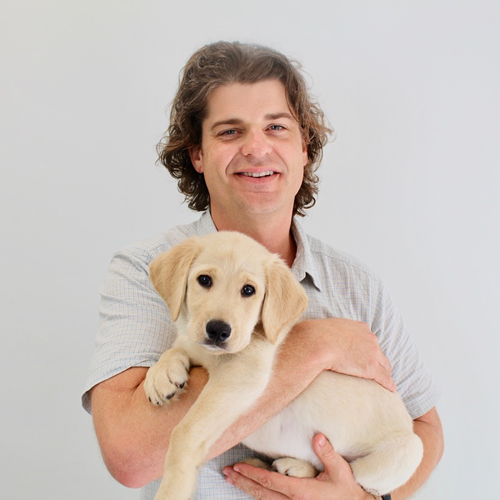We’ve all heard the term “survival of the fittest,” which scientist Charles Darwin famously coined to explain how organisms with heritable traits that give them an advantage — such as avoiding predators or beating out others for the chance to mate — are able to survive and pass on these advantageous traits to their offspring.
In his talk with ClubEvMed last Tuesday, Brian Hare of Duke Evolutionary Anthropology explained key points from his new book that he co-authored with his wife and research partner, Vanessa Woods, entitled Survival of the Friendliest: Understanding Our Origins and Rediscovering Our Common Humanity.

The term “fittest” is often associated with animals who are physically stronger or of more value than others, but being “fit” can also include an organism’s ability to communicate well with others in its group, which can provide an evolutionary advantage. For example, more social animals can form alliances with each other and protect each others’ young, so the whole population stays stronger in terms of number.
Hare cited a comparison between chimpanzees and bonobos, both of which have the potential for infanticide by aggressive males in a group. However, bonobos have zero cases of infanticide because female bonobos are able to communicate well and form alliances to protect each others’ young from aggressive males. Since the high cost of aggression for males outweighs the benefit, the males are friendlier, and the young bonobos survive. While this is a specific case with wild animals, other species have adopted social skills as a method of survival through domestication or self-domestication.

Hare referred to dogs as “exhibit A” of survival of the friendliest via domestication, because humans have bred dogs that are more playful, approachable and patient for centuries. Dogs are exceptionally good at understanding, responding to and communicating with humans as a result of domestication. Hare also explained one Russian study in which they began selecting foxes based on their friendliness towards people. They bred the most friendly foxes together and then compared the friendliness of their offspring to the offspring of randomly bred foxes. The results showed that friendlier foxes differed in physiology in addition to behavior, and were better at cooperating and communicating with humans. This is an example of self-domestication, which changes development patterns and has increased fitness via friendliness. Friendliness in this case means skill in cooperating and communication.
Survival of the Friendliest argues that humans today are the friendliest species of human, which may be why we have lasted so long evolutionarily. However, with the new type of friendliness also comes a new type of aggression. Mother bears are kind and nurturing to their cubs, but also have the most potential for aggression when they feel their cubs are threatened. Similarly in humans, when we feel people who share our identity are threatened, we want to protect those individuals.
Hare and Woods reason that this desire to protect also reduces our ability to cooperate or communicate with those who we feel threaten us or threaten our “group”— whether this be our family, our race or another trait. When our ability to communicate is reduced, we begin to dehumanize those who we feel threaten the people who share our identity. This then becomes a cycle, where people dehumanize those who they believe are dehumanizing them.
In order to stop this cycle, Hare and Woods argue that humans will need to alter their view of who they believe “belongs” to their group to include more people. We need to communicate openly and build a desire to protect other humans, rather than dehumanize them.

By Victoria Priester
